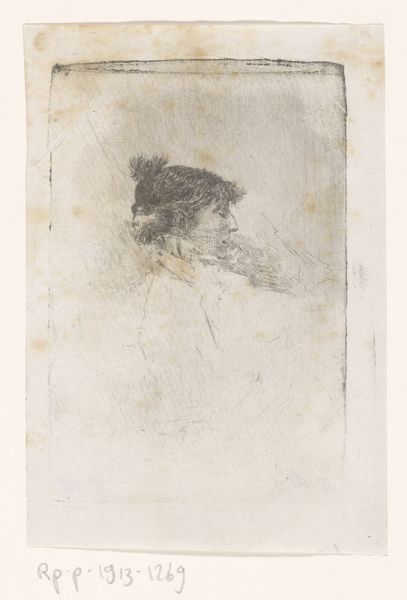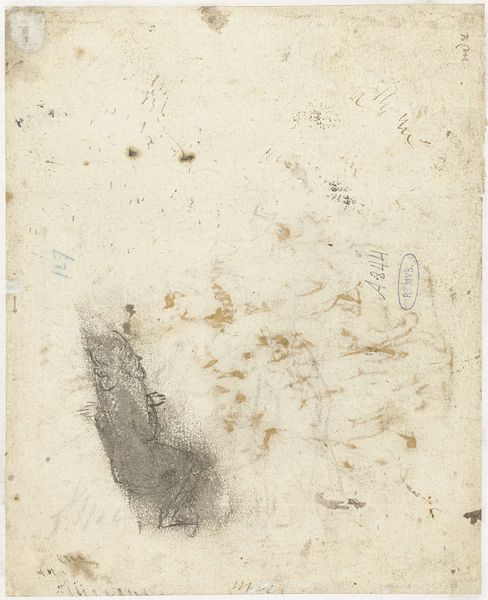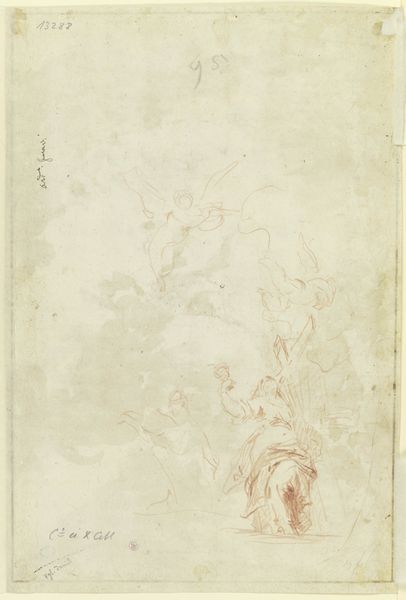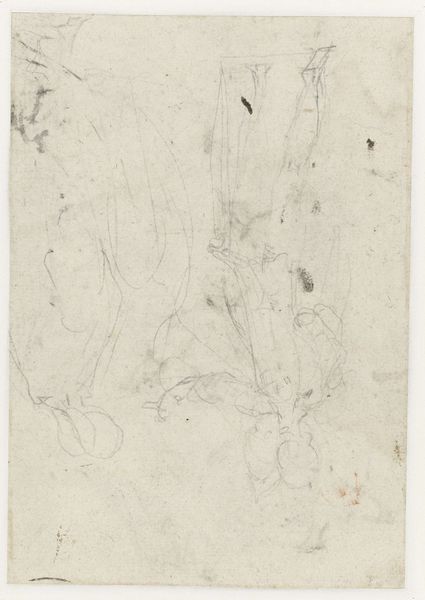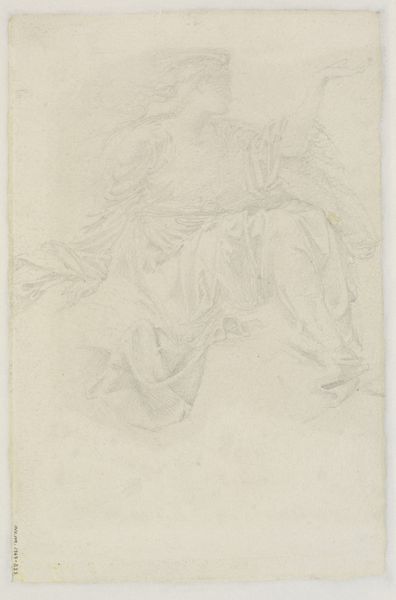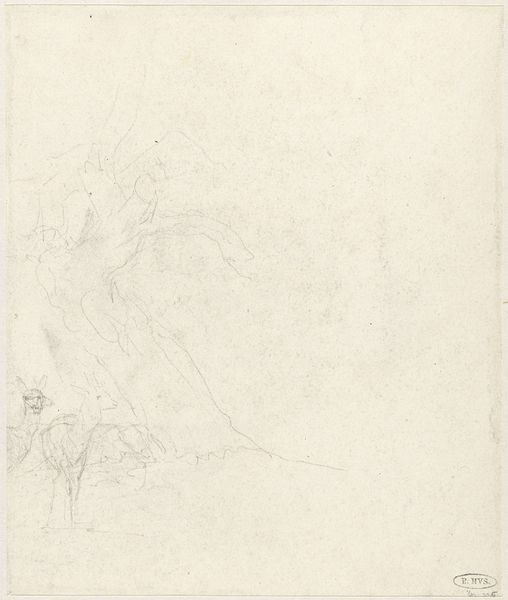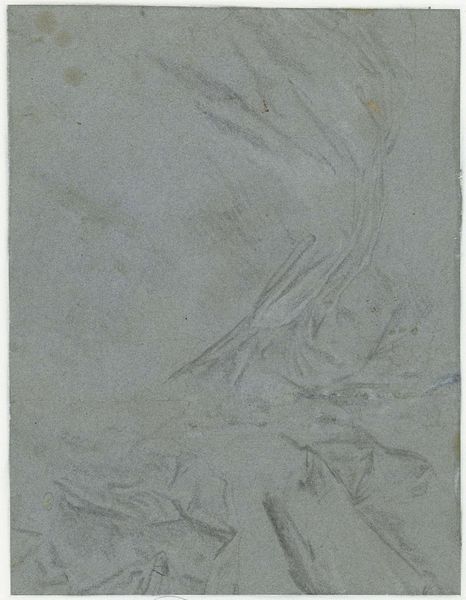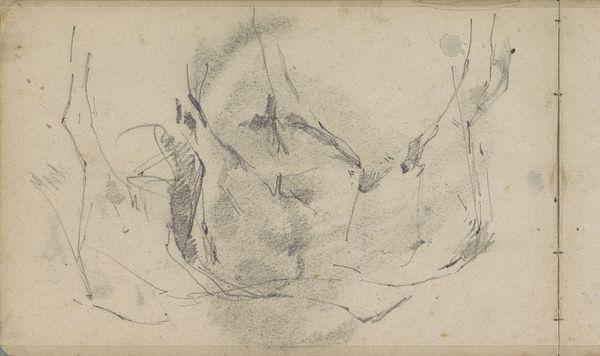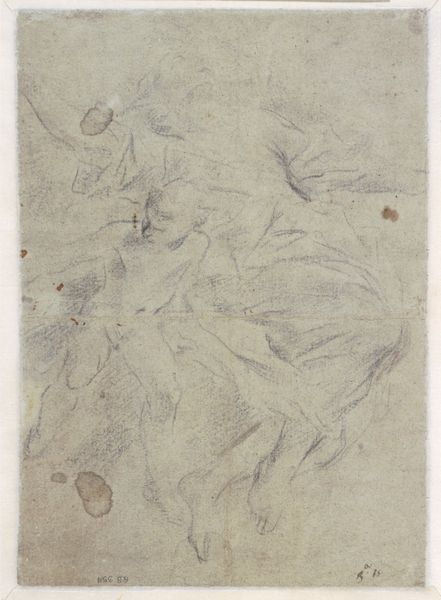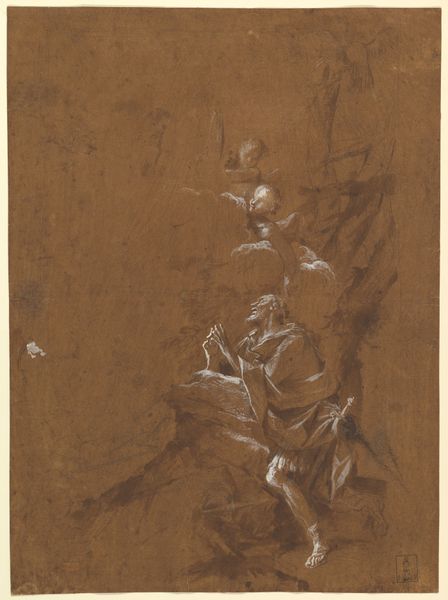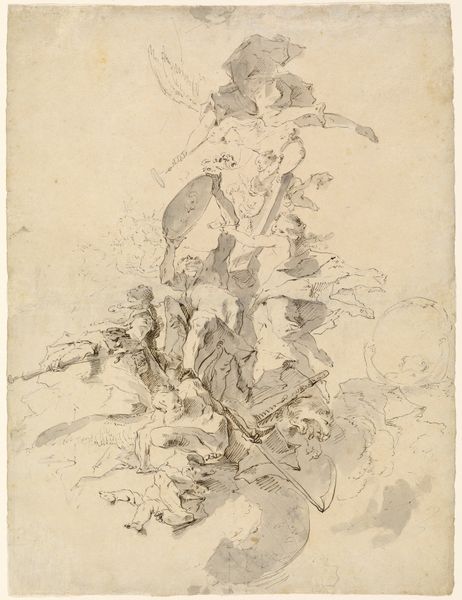
Studienkopf eines nach links oben blickenden Mannes c. 1742 - 1743
0:00
0:00
drawing, chalk
#
portrait
#
drawing
#
baroque
#
chalk
#
academic-art
#
rococo
Copyright: Public Domain
Curator: Giovanni Battista Tiepolo created this drawing, “Studienkopf eines nach links oben blickenden Mannes,” around 1742-1743. It's currently housed here at the Städel Museum. Editor: My eye is immediately drawn to the contrast between the heavily worked area of the hair, with its dark, almost sculpted quality, against the much lighter, sketchier suggestion of the rest of the figure. It’s quite arresting. Curator: Absolutely. As a Baroque and Rococo artist, Tiepolo was fascinated by capturing intense emotional and psychological states. The upward gaze evokes a sense of yearning, perhaps spiritual seeking, a characteristic trope within religious and allegorical art of the period. Editor: What I find compelling is the material evidence of the creative process. You can see how Tiepolo layered chalk, building up the tonality to give form and weight to this "head study". It makes me wonder about the labor, the physical act of making the drawing. Was it for practice, a preparatory sketch, or something else? Curator: Drawing was considered foundational to art academies of the time. These studies were an exercise in rendering form, but also helped disseminate and standardize stylistic elements across his workshop and beyond. The act of replicating figures allowed him to build a repertoire of characters for grander compositions. Editor: And the chalk itself... its origins, the means of its production, the way its qualities lent themselves to Tiepolo’s particular vision. We easily consume art without always thinking of the actual material. This makes me see it anew. Curator: Indeed. The materiality is often overlooked when analyzing artworks, we get caught up in narratives. Yet, tracing the lineage of images and styles can unlock deep cultural resonances. This upwards glance has roots going back millennia. Editor: Considering how this sketch might relate to the social realities of the time—patronage, the demands of the market for artwork—also allows one to look at the artwork, not as the inspiration of one artist, but as part of an intertwined set of practices and material constraints. Curator: I agree; the image clearly works on different layers. A small chalk drawing like this embodies a cultural ambition while serving as an artifact of a distinct workshop practice. Editor: Well, it definitely enriches my understanding when these issues of materials, context, and practice, as well as iconography, are all considered when approaching such pieces.
Comments
No comments
Be the first to comment and join the conversation on the ultimate creative platform.
